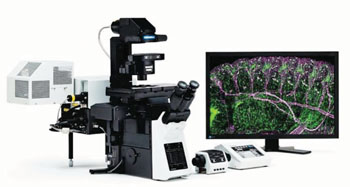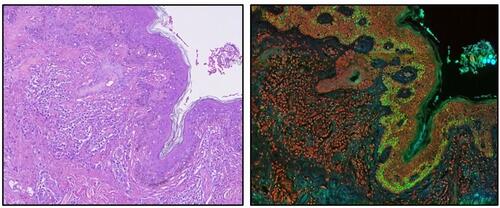Protein Biomarker Signals More Aggressive Prostate Cancer
By LabMedica International staff writers
Posted on 05 May 2015
Prostate cancer (PCa), the most common male malignancy, is frequently associated with bone metastases and a major challenge for treatment is to identify factors controlling tumor growth and metastasis.Posted on 05 May 2015
The metastatic process begins in the primary tumor with activation of genes that promote angiogenesis, the development of new blood vessels, tumor invasion and migration leading to colonization of peripheral tissues including bone.

Image: The FluoView 500 Laser Scanning Confocal Microscope (Photo courtesy of Olympus Inc.).
Scientists at the University of Michigan (Ann Arbor, MI, USA) and their Italian colleagues investigated whether adding a phosphate group, a process called phosphorylation, to the protein Runt-related transcription factor 2 (Runx2), changes its structure to activate specific genes in both bone and prostate cancer cells, but with vastly different results. Bone cells need Runx2 and the newly roused genes to make healthy bone. However, in prostate cancer cells, Runx2 triggered genes that fuel tumor growth and metastasis. They analyzed tissue samples from 129 patients with prostate cancer.
The team used various techniques in the study including Western blot analysis and immunofluorescence, transient transfections, luciferase reporter assays and virus transduction, cell migration and cell invasion assays, and immunohistochemistry. Fluorescence was detected using an Olympus FluoView 500 Laser Scanning Confocal Microscope (Olympus Inc., Waltham, MA, USA). Tissue samples from a total of 129 Caucasian patients with prostate disease were used to construct tissue microarrays.
The investigators found little or no Runx2 phosphorylation in normal prostate, benign prostate or prostatitis, which suggests that Runx2 phosphorylation is closely associated with the more aggressive forms of prostate cancer. The next step is to establish an actual cause-effect relationship between Runx2 phosphorylation and prostate cancer. Renny T. Franceschi, PhD, the senior author of the study said, “If this biomarker does indeed control the growth of prostate cells, it's a new signal that's not been seen before and could provide a potential new drug target for prostate cancer. It could also be a potential biomarker to discriminate between fast and slow growing tumors.” The study was published on April 13, 2015, in the journal Oncogene.
Related Links:
University of Michigan
Olympus Inc.













